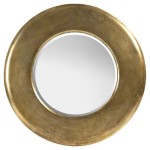How to Screen Mirror from iPad to Macbook Pro
Screen mirroring allows users to display the content of an iPad's screen onto a Macbook Pro's larger display. This functionality proves useful for presentations, sharing media, or simply enjoying a larger view of iPad applications. Several methods facilitate this mirroring, each with its own benefits and requirements.
Using AirPlay to a Mac with macOS Monterey or Later
Apple introduced native AirPlay support to Macs starting with macOS Monterey. This offers a streamlined approach to mirroring an iPad to a Macbook Pro. To utilize this method, both devices must be on the same Wi-Fi network and have Bluetooth enabled. The Macbook Pro should also be running macOS Monterey or a later version.
To initiate screen mirroring, open Control Center on the iPad by swiping down from the top right corner of the screen. Tap the "Screen Mirroring" button. A list of available AirPlay devices will appear. Select the Macbook Pro from this list. The iPad's screen will then be mirrored on the Macbook Pro's display.
Controlling the mirrored content remains on the iPad. The Macbook Pro essentially acts as an external display. Ending the mirroring session involves returning to Control Center on the iPad, tapping the "Screen Mirroring" button again, and selecting "Stop Mirroring."
Using AirPlay to a Mac with Older macOS Versions (via Third-Party Apps)
For Macbook Pros running older macOS versions predating Monterey, third-party applications can provide AirPlay receiver functionality. Several applications offer this feature, both paid and free. Researching and selecting a reputable application is recommended, considering factors such as performance, features, and user reviews.
After installing the chosen application on the Macbook Pro, launch it. The application typically places an icon in the menu bar, indicating its active status and providing access to settings. The iPad should then recognize the Macbook Pro running the AirPlay receiver software as an available mirroring destination.
The mirroring process from the iPad proceeds similarly to the native AirPlay method. Open Control Center, tap "Screen Mirroring," and select the Macbook Pro from the list. The specific steps for stopping the mirroring session might vary depending on the third-party application used, but generally involve accessing the application's settings through its menu bar icon.
Using a Wired Connection with QuickTime Player
A direct wired connection offers a stable and reliable method for screen mirroring, especially in environments with unreliable or congested Wi-Fi. This method requires a USB cable compatible with both the iPad and the Macbook Pro. Typically, this involves a USB-C to Lightning cable or a USB-C to USB-C cable, depending on the iPad model.
Connect the iPad to the Macbook Pro using the appropriate cable. Open QuickTime Player on the Macbook Pro. Go to "File" in the menu bar, then select "New Movie Recording." A recording window will appear. Next to the record button, a dropdown arrow will be visible. Click this arrow and select the iPad as the camera and microphone source. The iPad's screen will then be displayed in the QuickTime Player window.
This method mirrors the iPad's screen and allows for recording the mirrored content. To stop mirroring, simply close the QuickTime Player window or select a different source from the dropdown menu. Note that this method doesn't extend the iPad's display; it only mirrors it within the QuickTime Player application.
Choosing the Right Method
The optimal method for screen mirroring depends on the specific circumstances. For Macbook Pros running macOS Monterey or later, native AirPlay provides the simplest and most convenient approach. For older macOS versions, third-party AirPlay receiver applications offer a viable alternative. Wired connections using QuickTime Player provide a stable connection and recording capabilities, suitable for situations requiring consistent performance or content capture.
Troubleshooting Tips
If encountering difficulties with screen mirroring, several troubleshooting steps can be taken. Ensure both devices are on the same Wi-Fi network and that Bluetooth is enabled. Restarting both devices can often resolve connectivity issues. Checking for software updates on both the iPad and Macbook Pro is also recommended. For wired connections, verify the cable's integrity and compatibility.
If problems persist with third-party applications, consulting the application's documentation or support resources may provide specific solutions. For issues with native AirPlay, reviewing Apple's support documentation can offer further assistance.

3 Ways To Share An Ipad Screen On A Mac 2024 Movavi

How To Mirror Ipad Mac Via Usb Lightning Cable

How To Share Ipad Screen On Mac Via Usb Or Wifi

2024 Screen Mirroring Mac To Ipad Most Common Solutions

How To Airplay From Iphone Or Ipad Mac 9to5mac

Updated 2024 How To Screen Mirror Ipad Mac Airdroid

Use Ipad As A Second Display Apple Support

How To Extend Or Mirror A Mac Screen An Ipad With Sidecar Pcmag

How To Mirror Iphone Display Macbook Ios 12 Macos Mojave

How To Screen Mirror Ipad Mac With Ipados 15








